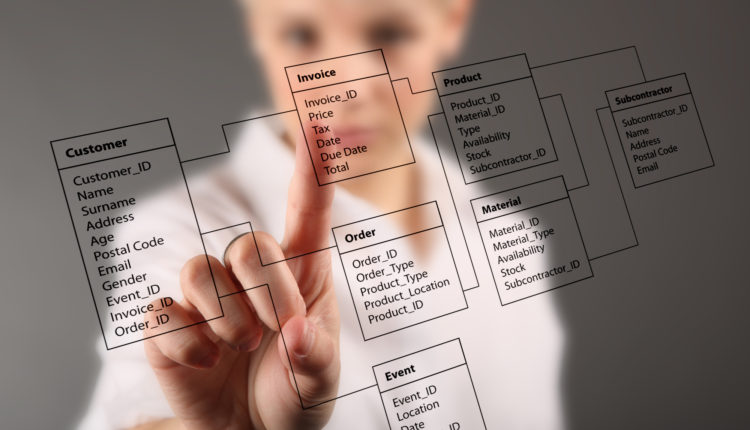
Data-Driven: What’s the Best Client Database for Small Business?
With the average company data breach now totaling around $4 million, it’s vital for even the biggest and most secure companies to take their security seriously.
Your client database is a goldmine of information when used properly. You could be using it as the key to serious growth for your business or for other companies who want to know your secret.
Here are four things to look for in a client database for your small business.
Contents
1. You Need Backup
First and foremost, you need to ensure that your tool makes it easy for you to backup data. A database that isn’t backed up could be a disaster waiting to happen.
When you’re storing lots of customer data, your customers are trusting you to take care of their information and to protect it. In the event of a natural disaster, you could lose your data and have to retrieve it again. If you have to ask for it again, you could get flagged for spamming customers who don’t understand why you need their information again.
Backup is important for any system. Your company has worked hard to build your customer database into something robust and useful. If you lose your hard work, you lose the hours of labor and the real money that you paid staff to gather the data.
If something happens or if you fear a data breach, you need to be able to wipe your on-site system clean. If you haven’t backed everything up, you’ll have to try to lock out hackers while also protecting your data. The freedom to hit delete is what hackers expect you not to be able to do.
2. It Needs to Be Secure
No matter what kind of company you run, every system requires the highest level of security to ensure that nefarious actors stay locked out.
Start by making sure your data is secured on site. Every access point needs to be secured and all systems need to be password protected. Your WiFi should require credentials so that no one can get in and start accessing your information.
There could be software used by machines on your network that have default credentials saved. If this is the case, your system isn’t secure.
You need to treat customer data with the value that it holds. Customers who have trusted you with their information want to ensure that you take their data seriously and don’t sell it to third-parties. You could have precious or sensitive information that customers don’t want just anyone to access.
Also, when you let customer information get out, you make yourself vulnerable to lawsuits, a damaged reputation, and lost revenue in the future.
If you’re considering farming out some of the work, take some time to learn more about database services available.
3. Simple Deployment
When it comes time to give relevant parties access to your database, you need to ensure that deployment isn’t difficult. Most in-house development teams don’t think about users when they put together their database software. The deployment of a database is a notoriously user-unfriendly process.
The structure of the data should make it simple to use and access. It should be secure and protected but shouldn’t be hard for your company to deploy.
When your database deployment isn’t planned well, it will lead to delays. Combat this pattern by carefully automating what can be automated. Script and plan every important element of your database to ensure a smooth deployment.
Hiring a server consultant can alleviate a lot of the potential problems with deployment. An SQL consultant will handle major deployment needs and ensure that everyone knows what they’re doing. They can put together a training plan for your staff so that you can rest assured that everyone will know what to do when deployment begins.
4. Design and Maintenance
The design and maintenance of your database are essential to making sure that your staff uses it properly. If it’s prone to problems like crashes, freezes, or lack of compatibility, you should have it reassessed. Your database needs to run smoothly if you want your staff to use it.
Roadblocks and hurdles will have your staff cutting corners, using it improperly, and sometimes avoiding it altogether. Don’t make your employees’ lives any harder than they need to be. Keep productivity up by making your design easy to use and keeping it well-maintained.
You should reorganize your database often to ensure that it runs well. Remove old data and rebuild indexes on a regular basis. To echo point number one, you need to back up important data as often as possible so that you can get back on track if you hit any snags at all.
Databases and hard drives can be corrupted when third-party data is installed or if small bugs grow out of control. Keep an eye on any hardware faults or platform issues that might arise.
Remove leftover maintenance data on a regular basis. Always keep a firm belief that only your customer data is sacred.
If you have training documents or provisional software installed on the same database as your customer information, get rid of it. Keep your customer database separate from any of your other important company tools or information.
Errors can go unnoticed on a system that’s not well maintained. If they start to grow, you could end up with data loss problems that will lead to serious inefficiencies.
A Client Database Needs to Fit Your Company
No matter what your client database solution is, you need to make sure that it’s suited to your company’s limitations. While you might want the best tool that money can buy, if your staff can’t handle it, you need to scale back. Tools need to fit the job to get the most out of them.
If you think you’re dealing with a virus in your system, check out our guide for some simple computer virus solutions.


Comments are closed.